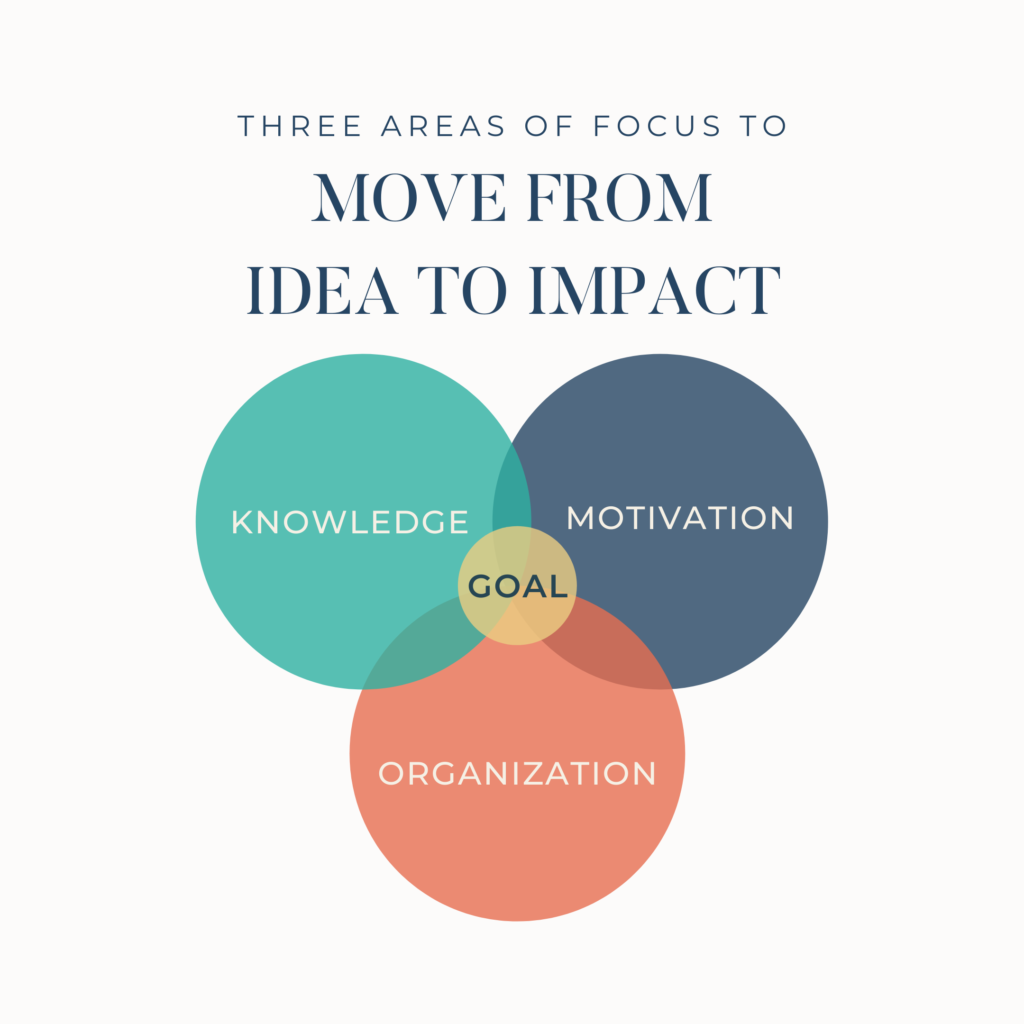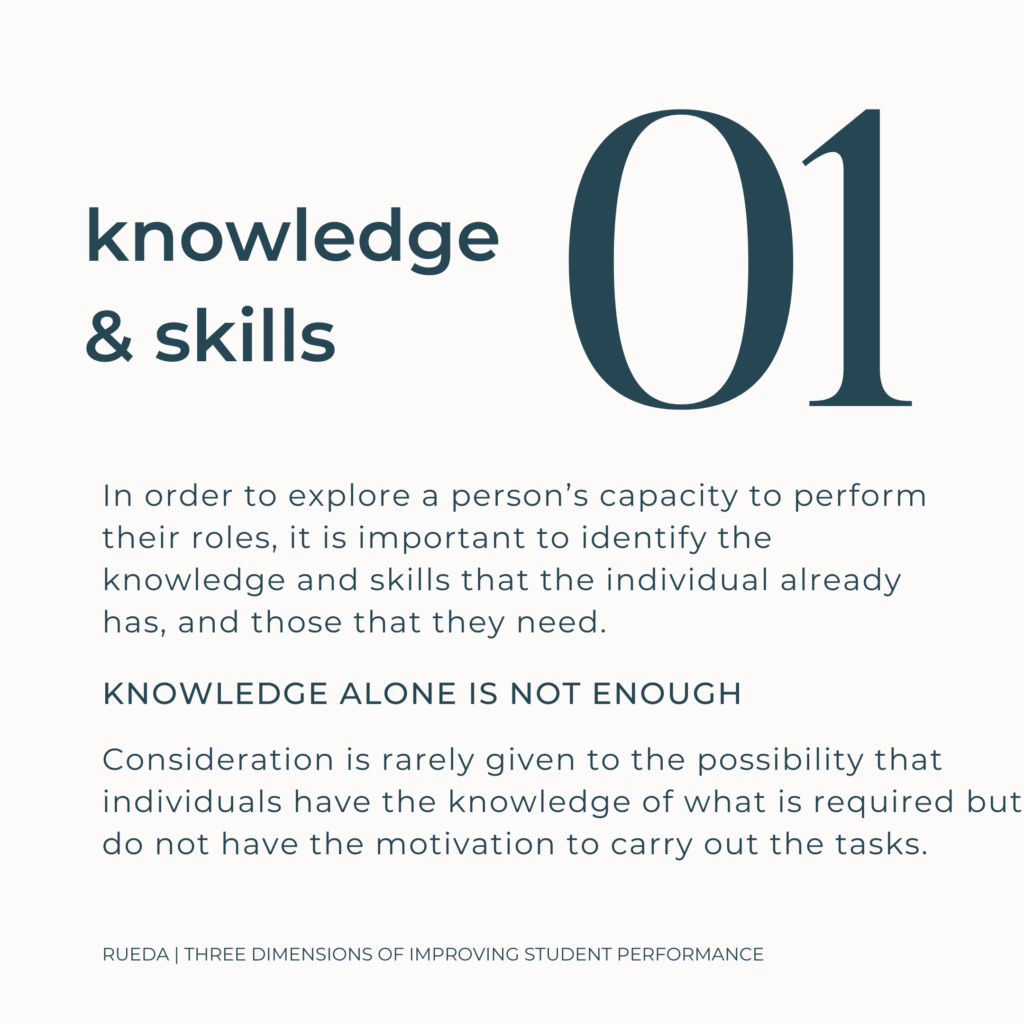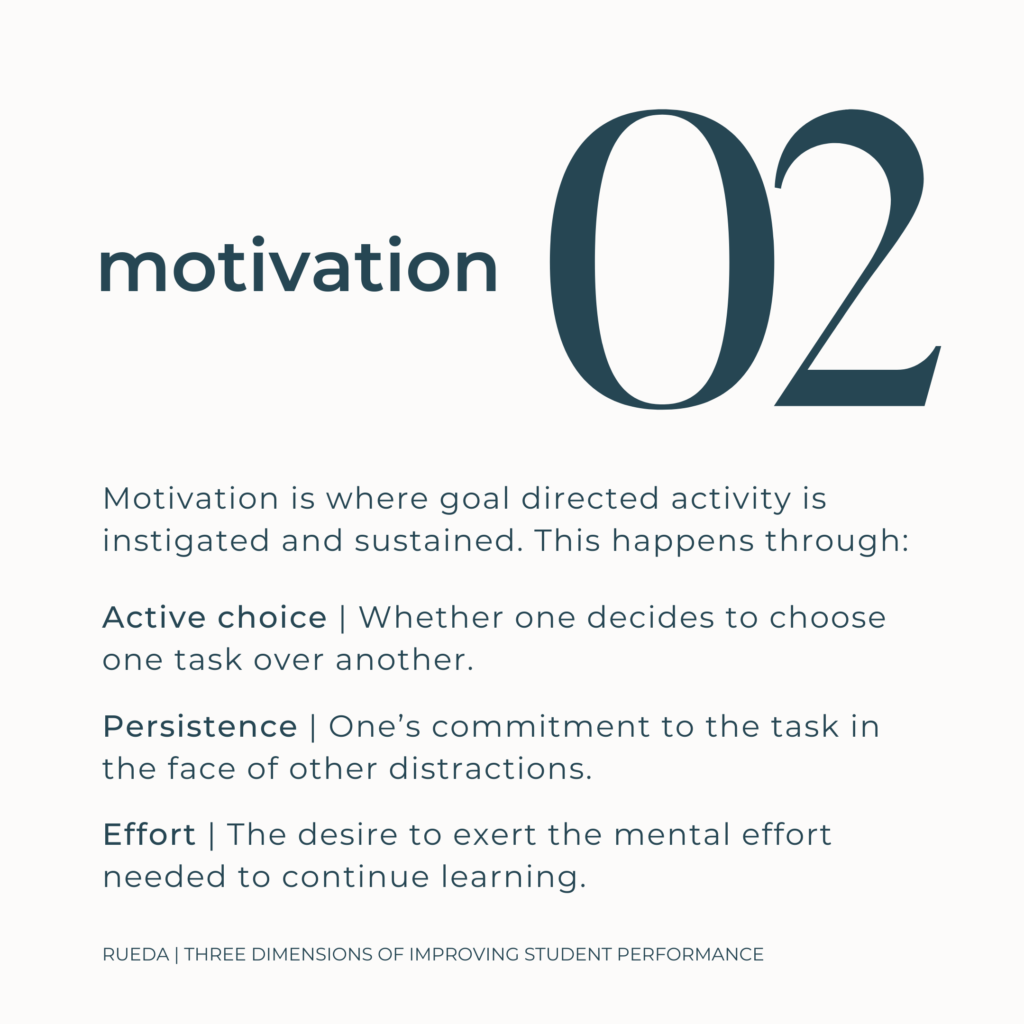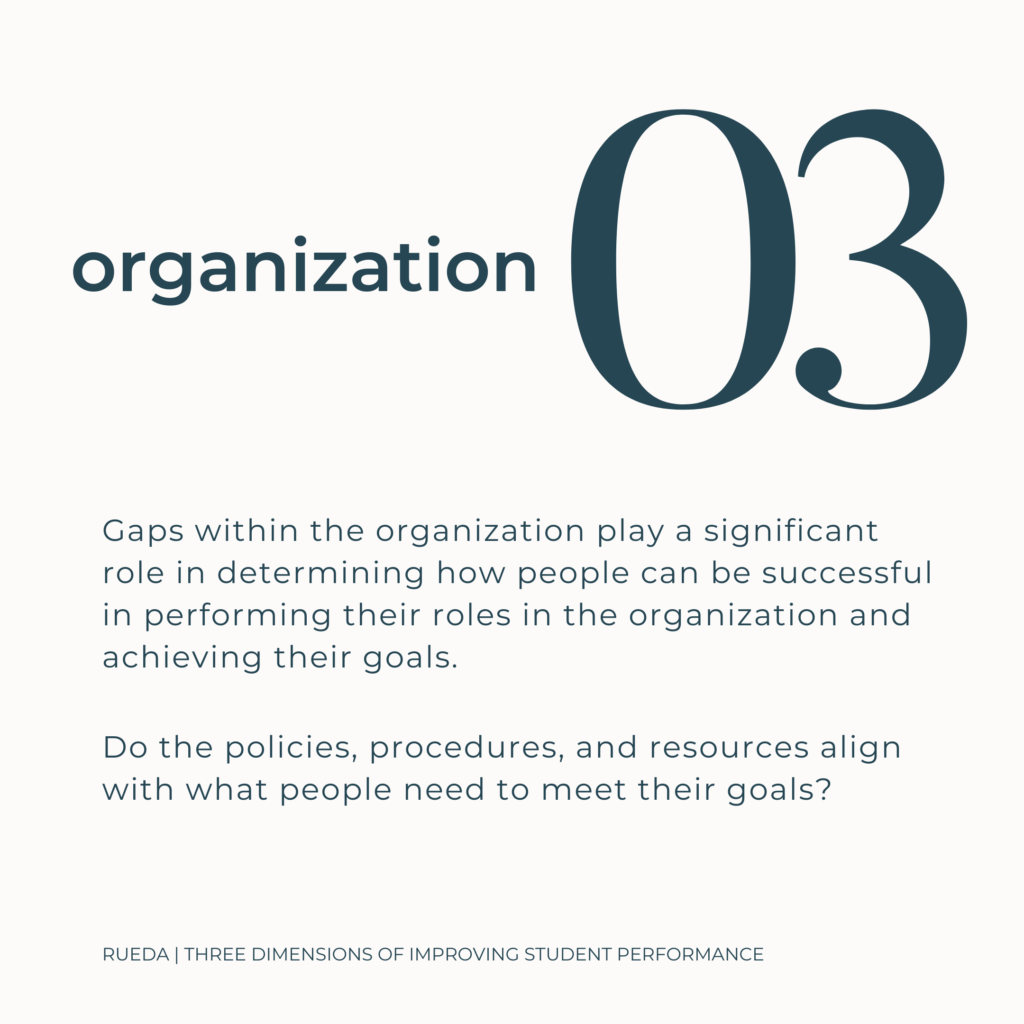It’s hard to believe that it has been a century since Dewey advocated for moving from teacher-centered to learner-centered classrooms, designed around students’ strengths and interests, developing emotional intelligence through social interactions, and solving real world problems. It’s also hard to believe that it has been a decade since the introduction of iPads and Chromebooks, which many believed would serve as the catalyst to fulfilling the century old vision held by Dewey.
Technology for Dewey meant the art of experimental thinking. Products he said were the culminating artifact. And the technology lied in the experimental thinking, design and art that could provide the foundation for creating other new products.
Whether you started in 2010 or 2020, this is the moment to pause and ask:
What do we want to accomplish in schools?”
If you want to move away from a fragmented approach to how we evolve teaching and learning in education organizations, align your problems with solutions, and maximize your investment in technology with data, then keep reading because I’m going to share how you can accomplish those three goals using the Gap Analysis framework by Clark and Estes.
This is particularly timely as we see more and more schools adopting a “Graduate of a Profile” amongst other initiatives. It’s time to take our aspirational statements and make them a reality, so that 5 years from now you become a beacon for what’s possible when designing schools and have the data to document your journey.
TL;DR – Innovation Gap Analysis
In this article I share how organizations can use the Clark and Estes Gap Analysis framework to define goals, determining gaps, and evaluating outcomes. You can download the template here as you answer, “What do you want to accomplish in schools?”
Download the Mural template here.
What is an Innovation GAP Analysis?
Can you standardize the behavior of employees through training and quality control measures so that they do not have to solve novel problems or adapt to significant changes and evolve?
Authors, Richard Clark and Fred Esetes say if the answer to this question is no, then you must think of your employees as capital. In education organizations the answer is definitely no. Our failure to invest in people has led to an influx of technology, without a significant impact on teaching and learning practices.
In 2001 sociologist Paul Attewell wrote, “The First and Second Digital Divide”. He shares: “Placing computers in the hands of every student is not a solution. Because the challenge lies in addressing the “digital use divide – changing the tasks that students do when provided with computers.”
In a 2017 report from PricewaterhouseCoopers (PwC), educators expressed low confidence in teaching trending skills. And 79% stated they needed more release time and professional development. In a recent interview on the podcast with Tony Richardson, Vice Principal of MLK Steam and Design Academy, he shared that leaders must be mindful of teacher trauma. This echoes an article by EdSurge, “America’s Teachers Aren’t Burned Out. We Are Demoralized.” The article shares:
“Those outside education assume that the teacher can’t hack it in the classroom. But in reality, teachers are forced to operate in systems that aren’t functioning properly. Which makes teachers feel demoralized, discouraged and overwhelmed.”
When thinking about Dewey’s vision for teaching and learning, we have a fundamental mismatch between the knowledge, motivation, and organization gaps for innovation within education organizations that prevent us from reaching our goals.
Innovation Gap Analysis: The Three Phases
The technology we have today did not exist during Dewey’s era. While the tools we have access to today can accelerate designing the environments he advocated for, they are not the starting point. Starting with technology often hinders our growth.
If we are to actualize Dewey’s vision in education organizations we must begin with relationships at the center. And create cultures of innovation that begin with a culture of empathy. I first learned about the Gap Analysis model while in the Global Executive EdD program at the University of Southern California. We can apply this framework to solve problems. Or to identify recommendations from a promising practice that can be applied to other organizations.
I’ll share each phase of the Innovation GAP Analysis, how I applied it with Design39, and how you can use it in your current context. The framework consists of three steps:
- Defining goals
- Determining gaps
- Evaluating outcomes
Innovation GAP Analysis Step 1: Defining Goals
What do you mean by learning? This question was posed by Seymour Saranson, who wrote:
“School is a set of rules and formulaic procedures, behavioral and programmatic regularities, that leads to a system where a school is run like a business whose practices are often left unexamined while the world outside is rapidly changing.”
When was the last time you sat down with your teachers and asked, “What do we mean by learning at ___X___ district?” When was the last time you asked, “What do we want to accomplish?”
So that we make data-driven investment in people, and know which solutions will increase performance, we begin by defining three types of goals:
Long Term Goals
This can often be the vision statement of an education organization. In the case of Design39, “Life ready thought leaders who elevate humanity.” This could also be your profile of a graduate. It’s important to complement this goal with specific achievement indicators. How will you know that this has happened? What will success look like to you?
Intermediate Goals
Here, you can specify what to do in order to reach the long-term goal. This could be rethinking assessment, introducing competencies at each grade level, examining professional learning practices, evaluating collaboration practices, or reimagining the schedule.
Day to Day Goals
These are goals set by every individual as they do their part to work towards the long term goals. Both teams and individuals need to have short daily/weekly goals to influence the outcome of the larger goals.
When creating goals Clark and Estes say the best goals are concrete – clear and easy to understand, challenging – doable but difficult, and current – daily or weekly goals. To be successful in achieving the long term goal, we move to step 2 where an organization must better understand the people they are working with. They must begin with empathy to successfully close the gap between the desired and actual performance.
Innovation GAP Analysis Step 2: Determining Gaps for Innovation
Think about the last time you adopted a new curriculum, technology initiative, or implemented any new practice. How did you decide on the solution? When it came to professional development – how did you determine the right solution? When thinking about the adoption of products, whether they be physical such as devices, or services such as consulting or professional development – were you designing with people? Or were you designing for them?
Clark and Estes share that there are three areas we must examine if we are to reach, and/or share our goals:
- People’s knowledge and skills
- Their motivation to achieve the goal
- Organizational barriers
The authors share the analogy of people as cars. They say knowledge is the engine and transmission. Motivation is the fuel that energizes the system, or in today’s world the battery that energizes. Organizational factors are the road conditions. Each of these three areas must be aligned for education organizations to evolve.

Understanding the intersection of these three areas to achieve desired goals is essential.
Consider for a moment how we often approach professional development. Consideration is rarely given to the possibility that individuals have the knowledge of the requirement. However, do not have the motivation to carry out the tasks. Or that they have the knowledge and motivation, yet the organization does not have the design schedule in a way to make the experience possible.
In my research, I studied Design39 as a promising practice. The study examines how educators at a TK-8 public school, Design39 Campus, utilized design thinking to challenge traditional practices. This is actualize Dewey’s vision for teaching and learning by providing students with the knowledge, skills and mindsets to innovate, create new products, services and business models so that they can thrive in their careers and as global citizens.
GOAL: How can other organizations adapt design thinking practices to actualize Dewey’s vision for teaching and learning?
Next let’s break down each area – knowledge, motivation, and organization, and how you can apply it in your context.
Discovering the Knowledge Gap
In order to explore a person’s capacity to perform their roles, it is important to identify the knowledge and skills that the individual already has, and those that they need.
Krathwohl emphasizes taking a comprehensive approach to understanding a person’s knowledge base. To explore a person’s knowledge Krathwohl created a revised version of Bloom’s taxonomy. Krathwohl categorized knowledge into four different categories:
- Factual knowledge refers to fact-based knowledge, for example, understanding terms and details to solve a problem.
- Conceptual knowledge is understanding the different categories or classifications within a certain discipline.
- Procedural knowledge refers to the knowledge and skills to carry out the specific task.
- Metacognition is an awareness of one’s own learning and thinking.
The different areas are important to consider because an individual may have the knowledge of the facts. But not necessarily understand how to apply it. Furthermore, it is essential that individuals engage in metacognitive practice. This is so that they can be aware of how they are applying their knowledge and whether their application is optimal or needs adjustments.
Let’s go back to the goal I used earlier:
How can other organizations adapt design thinking practices to actualize Dewey’s vision for teaching and learning?
Here are the three knowledge areas I focused on to identify the innovation gaps in knowledge between current and desired performance:
- Knowledge of the design thinking process (declarative)
- The knowledge of how to integrate design thinking into the curriculum (procedural)
- Knowledge of how to reflect on their effectiveness in integrating design thinking into the curriculum (metacognitive)
Evaluating the Motivation Gap
We talk about motivation and almost every time I scroll my social media feed it’s filled with quotes designed to fuel motivation. But what is motivation?
In his book, “The 3 Dimensions of Improving Student Performance,” Robert Rueda defines motivation as, “a process where goal directed activity is instigated and sustained”. While a social post or positive experience that instigates motivation matters, how it is sustained is what matters more.
Rueda breaks shares the three elements that are critical to sustaining motivation.
– Active choice – whether one decides to choose one task over another.
– Persistence – one’s commitment to the task in the face of other distractions.
– Effort – the desire to exert the mental effort needed to continue learning.
Let us once again return to my goal:
Understanding the motivational influences is critical when identifying how to support teacher capacity to utilize design thinking as a framework for implementing the standards-based curriculum. While there are many dimensions to focus on when it comes to motivation I chose utility value – because if people don’t understand why something matters, or they don’t see the value, it’s already game over.
The second area I chose was self-efficacy. This one is particularly important in today’s context. I believe we have a lot of knowledge, yet we don’t always feel as if we are capable. Fear of failure stops us before we often even give ourselves the opportunity to begin. The last area I chose was goals. This is where the empathy conversation is critical. If the goal or the organization can align with the goal of an individual there will be an increase in the motivation to participate.
So, here are the three motivation areas I focus to identify the innovation gaps in motivation between current and desired performance:
- Do you see the value in integrating the design thinking process in the curriculum to empower students with the knowledge, skills and mindsets to thrive in their world? (utility value)
- Do you believe you are capable of effectively integrating the design thinking process into the curriculum alongside traditional methods? (self-efficacy)
- Also, do you want to collaborate with others to engage in continuous improvement of their ability to integrate design thinking into the curriculum. (goal orientation)
Evaluating the Organization Gap
Moreover, the gaps within the organization play a significant role in determining how people can be successful in performing their roles in the organization and achieving their goals. So, with change taking place at an exponential rate and routine work being outsourced, organizations need their individuals to be self-directed learners who are driven by intrinsic motivation
- Cultural models are a shared set of organizational beliefs and values that are learned over time.
- Cultural settings are more visible organizational influences such as policies and procedures and the degree to which resources are available.
Here are the three organization areas I focus on to identify the innovation gaps in the organization between current and desired performance:
- Do you cultivate a culture of innovation amongst educators to evolve traditional methods of teaching? (cultural model)
- Do you provide professional development so educators can continue to enhance and develop their ability to integrate design thinking into the curriculum? (cultural setting)
- Does your schedule allow for deeper learning opportunities to facilitate design thinking experiences? (cultural setting)
Assessing each of these areas, allows you to create a criteria that can be personalized to individuals within the organization. So that everyone feels supported as you work towards your long-term goal.
A simply way to begin is by asking:
- What are the factors that prevent us from achieving ____insert your goal____?
- What do you see as potential barriers to our achievement of ___insert your goal____?
Use the answers from these questions to create more specific inquiries into each of the knowledge, motivation, and organization gaps that exist so that you can design solutions that move you from your current state to your desired state.



Step 3: Evaluating Progress and Results
Did it work? Evaluation is one of the most important parts of this process. Without it, we cannot determine the degree to which to close the performance gap. Clark and Estes outline four levels of evaluation:
- First Level: Reaction – what do people think or feel about the situation?
- Second Level: Impact – did the solution result in changes in the learning, motivation, and organization gaps identified?
- Third Level: Transfer – was the implementation and of the solution and after introducing the solution effective?
- Fourth Level: Bottom Line Results – did the solution contribute to the overall long term goal?
Also, we cannot do designing change to evolve education organizations in isolation. We must bring teachers and students to the forefront of the conversation. At Designing Schools I commit myself to give you the tools you need, not just talking about them. So I have a template for you. Use it in your next meeting to do a check in on your current goals. So you can evaluate where you are and where you want to go.
So, if you want a partner in examining how to make the most of your current investment in technology to actualize the vision and goals you’ve set forth for your organization, then I invite you to schedule a call with me here. Also, I leave you with a final thought from Clark and Estes who ask what matters more, “If your computers ran 10 percent faster or if your people performed 10 percent better?”
Coming Soon: Designing Schools: The Future is a Place We Create
This summer I’m releasing a new documentary on how to use design thinking to create learning experiences where students have the knowledge, skills and mindsets to innovate, create new products, services and business models to that they thrive in future workplaces and as global citizens. You can view the trailer here.
I’m Sabba.
I believe that the future should be designed. Not left to chance.
Over the past decade, using design thinking practices I've helped schools and businesses create a culture of innovation where everyone is empowered to move from idea to impact, to address complex challenges and discover opportunities.
stay connected
designing schools